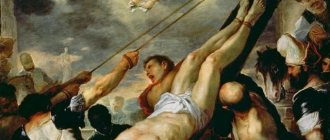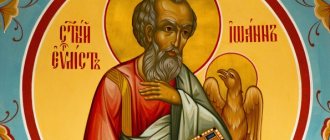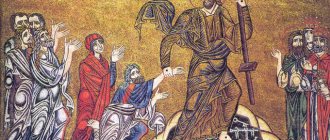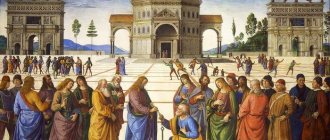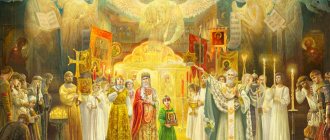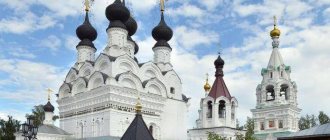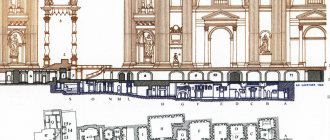Among our heavenly patrons there are a large number of saints and Orthodox ascetics. We have the great benefit of turning to them for help in difficult moments of our lives. But among all the saints glorified by our Church, there is a special group of ascetics who found Christ himself and adopted His teaching from the original source. We are talking about the apostles. These disciples of Christ dramatically changed their lives in order to follow the Savior. And among them, Peter especially stands out. Who was he and what was he especially famous for?
Biography of the Apostle Peter
Apostle Peter (born Shimon or Simon) is a famous preacher of the Gospel who, as religious texts say, was able, by the power of words, to convert 4-5 thousand people at a time to Christianity; one of the most devoted disciples of Jesus, endowed with the gift of raising the dead, healing the suffering, who did not even touch him, but only his shadow; guardian of the keys to heaven, meeting the souls of the deceased at its entrance; the first of the popes; elder brother of Andrew the First-Called.
Painting "Saint Peter", Marco Zoppo
Peter was called the Apostle of Christian hope, because for sincere repentance, spiritual firmness and unfailing love, the Lord not only forgave his betrayal, but gave the right to forgive the sins of other repentant people and considered him worthy of salvation.
Childhood and adolescence
The future zealous follower of Jesus was born in the city of Bethsaida, located near Capernaum on the shores of Lake Galilee, presumably in 1 year from the Nativity of Christ. He was the first-born son of a simple fisherman, Jonah, and his wife Joanna. Subsequently, their family was replenished with a son, Andrei.
Painting "Andrew Leading Peter to Jesus", Caravaggio
The boy grew up kind, God-fearing, diligent and determined, but “unbookish,” that is, he did not receive an education. Over time, Simon moved to Capernaum and, like his father, began to engage in hard work that was dangerous and did not bring much income - fishing. Then he married the daughter of Aristobulus (one of the seventy apostles), raised a son and daughter, who, according to one legend, later became the Roman holy martyr Petronilla.
Judas Iscariot
The Bible helps us in this story too. Matthew 27:3-5 says...
Then Judas, who had betrayed Him, saw that He was condemned, and, repenting, returned the thirty pieces of silver to the chief priests and elders,
By saying, I have sinned by betraying innocent blood. They said to him: What is that to us? take a look yourself.
And throwing the pieces of silver in the temple, he went out, went and hanged himself.
BUT Acts 1:16-19 gives us a completely different picture of his death:
Men, brothers! It was necessary to fulfill what the Holy Spirit foretold in the Scriptures through the mouth of David about Judas, the former leader of those who took Jesus;
he was numbered among us and received the lot of this ministry;
but he acquired the land with an unrighteous bribe, and when he fell down, his belly was split open and all his entrails fell out;
and this became known to all the inhabitants of Jerusalem, so that the land in their native dialect was called Akeldama, that is, the land of blood.
I think among the LDS we are more used to the hanging theory, but who knows. In the end, it doesn't really matter.
The beginning of the way
During the period from 26 to 28, Jesus chose Simon as one of his 12 disciples to teach righteousness and prepare for the mission of spreading Christian ideas and truths.
Jesus Calls Peter and Andrew
There are two versions of the story about how the fisherman met the gentleman. The first (from Matthew and Mark) says that one day, for the convenience of communicating with people who arrived at Lake Galilee to hear the word of God, the Almighty entered Simon’s empty boat, asked him to sail away from the shore, and after the sermon ordered him to cast nets for fishing. Over the past night of fishing, all attempts to catch at least something were fruitless, but according to the word of Christ, the catch turned out to be incredibly large. After this, the fisherman recognized him as the Messiah and fell in reverent respect at his feet, and the savior called him to apostolic service.
According to another version (from John), the brother was brought to Jesus by Andrew the First-Called. Moreover, upon meeting, God named the new disciple Cephas (in Syriac) or Peter (in Greek), translated as “the stone” on which he would build the holy church. Soon after his calling, the savior came to his house and healed his wife’s seriously ill mother.
Apostle Peter and Jesus walk on water
Researchers do not see any contradictions in these biblical stories, believing that each of them represents certain aspects of an important event. Having responded to the Lord’s call and followed him, Peter became one of his closest and most beloved chosen ones. He was a very simple-minded, straightforward and spontaneous person with his doubts and weaknesses. However, for his fiery faith, kind heart and fearlessness, the savior allowed him to manifest them and gradually, in the process of spiritual growth, overcome them.
At first, Peter acutely felt his unworthiness and imperfection next to his teacher. However, when he saw Jesus walking towards the boat on the water (after he had fed 5 thousand people), Peter was the only one of the apostles who immediately wanted, with God's help, to follow in his footsteps. Although later he became afraid of the wind, doubted his abilities and began to drown, he learned a lesson - never to lose firm faith and determination.
Painting "Tears of St. Peter", El Greco
Also indicative was the moment when Peter accepted the teacher without hesitation and immediately expressed his readiness to follow him. But at that time, even John the Baptist was not completely sure that Christ was the son of God. He sent disciples to ask him about this. Then it became absolutely clear why the Messiah called the inspired simpleton Cephas - only on such a deep and indestructible faith as a rock could a church stand.
At the same time, using the example of Peter’s reaction to the Lord’s predictions about his upcoming martyrdom (namely, the call to be merciful to oneself), Christ showed that unshakable faith is not a guarantee that a person will not make mistakes. Jesus spoke sharply about this proposal, calling his beloved disciple “Satan,” and explained that on the path to grace, the apostles and all believers must be prepared for self-denial, misunderstanding, suffering, persecution, and even death.
Matthew (tax collector)
This Christian website says that Matthew “became a missionary and was arrested in Ethiopia. It was there that he was burned at the stake or nailed to the ground with spears and then beheaded. Apart from this, very little is known, since Matthew was in a very remote place in Africa and went where few historians or Christians would dare to go.”
National Geographic gives a slightly different version, saying that according to legend, Matthew was "stabbed in the back by a swordsman (in Ethiopia) sent by King Hertacus after Matthew criticized the king's morality."
Service
Despite Peter's excessive ardor, lack of education and other shortcomings, which were repeatedly manifested in communication with the divine teacher, Christ discerned his sincere and loving heart, patiently instructed, revealed the beauty of holiness, and made him a witness (together with James and John) of especially important events, including the Transfiguration on Mount Tabor and indescribable torment in the Garden of Gethsemane.
Jesus Christ and the Apostle Peter
When the savior was arrested, the devoted Peter even tried to resist, wounding his enemy with a sword. He courageously defended his beloved teacher and sincerely promised that he would not leave him under any circumstances, but after just a few hours he renounced, showing cowardice.
After the pupil’s repentance, the Lord restored him to his apostolic calling and handed him the keys to the kingdom of heaven, showing that the gates of heaven are opened through repentance, deep faith and selfless service. Peter was the first of the apostles to be convinced of the resurrection of Christ, without finding his body in the tomb, and it was he who rushed into the water, without waiting for the boat to moor to the shore, in order to quickly meet the resurrected savior.
Painting "The Denial of Peter", Caravaggio
In Jerusalem, on the day when the Jews celebrated the Feast of Pentecost, the Holy Spirit descended on the apostles. Peter immediately showed himself to be a fearless and brilliant preacher, turning to people with a fiery speech about the Savior. Then he had a wonderful vision, which told him that the Lord was calling not only Jews, but also pagans to find faith. Therefore, having received an invitation from the Roman commander of the century, Cornelius, he without hesitation went to his house, where he baptized all the pagans who wished to do so.
Doc. series "Apostles". Film 1st. "Simon-Peter" (2014)
Then, during five journeys, he preached in many countries, converted to Christianity, performed miraculous acts, exposing sinners, healing the suffering, and resurrecting the dead. In 42, by order of King Agrippa I of Judea, the grandson of the evil genius of the nation Herod the Great, he was imprisoned in a Jerusalem prison. Then the follower of Jesus was freed from prison by an angel, but this was not the only conclusion on his missionary path.
In 49, in Jerusalem, the Apostle Peter participated in the first Council of the Apostles in the history of the church, where conditions were developed for the acceptance of pagans into Christian communities, the refusal of sacrifices, the need for circumcision and other rites. Later, he wrote two Epistles that were included in the Bible, where he gave simple and understandable instructions, calling to love each other, because sincere love atones for many sins.
Death
At the end of his life, the apostle lived in Rome, where he was elected bishop, monitored the morals and behavior of believers, increasing their number. Among his deeds during that period was exposing the shameless deception of Simon the Magus, who declared himself Jesus. To demonstrate the power of Christian prayer, the preacher revived the deceased noble youth, while the impostor, with the help of magic, managed only to ensure that he opened his eyes and nodded his head.
Painting "St. Peter Heals the Sick with His Shadow", Masaccio
After this, a huge number of Romans, including the mistresses of Emperor Nero, converted to Christianity. Many women became champions of morality, refusing carnal intimacy. In 67, by order of the indignant prefect of Rome, the follower of Christ was arrested and executed.
Fresco "Apostle Peter resurrecting Tabitha", Masolino
Before his death, he asked his tormentors to crucify him head down, deciding that he was unworthy to die in the same way as his divine mentor. The burial place of the preacher is supposedly located near the Vatican Basilica of St. Peter.
Icons of the Apostle Peter
Reverence
For his especially devout service to the Lord, the Guardian of Paradise is revered in Christianity as one of the main apostles, called the supreme one. For Orthodox Christians, the established holiday "Peter's Day" is celebrated on July 12, for Catholics - on June 29. The northern capital of Russia, St. Petersburg, that is, the city of St. Peter, is named in his honor (and not at all in honor of Peter the Great).
St. Peter's Basilica in Vatican
The inspired righteous man continued to serve people even after his death. They pray to him for success in studies, for healing from illnesses, for strengthening faith and for the return of people from sects to the church.
Painting "The Death of the Apostle Peter", Caravaggio
Heritage
In addition to all his lifetime efforts aimed at spreading Christianity, the Apostle Peter left his descendants an invaluable work in the form of his two Epistles, which are included today in the New Testament.
The first message is an address by the student to small communities in different lands of Asia Minor. It so happened that the early Christians of those lands were subjected to special persecution and oppression by the enemies of the Church of Christ.
In addition, the many false preachers who appeared, who led the flock away from the path of salvation and preached licentiousness and principles contrary to Christianity, also led to disorder in the communities. The Apostle Peter, knowing about these difficulties, wrote his First Epistle to strengthen them, the gracious words of which still guide Orthodox Christians on the path to this day.
In his epistles, the Apostle Peter taught not to be afraid of threats and persecution
Despite all efforts to strengthen Christianity, the number of false teachers kept increasing. In those days there was no established practice of Christianity; it was just being formed. Therefore, many who initially misunderstood the teaching led the people in the wrong direction. The Second Council Epistle of the Apostle Peter is aimed at protecting newly created communities from precisely such false teachers.

